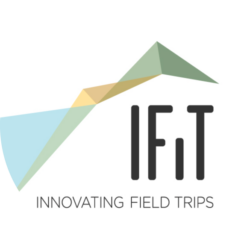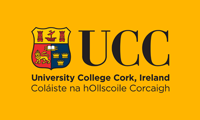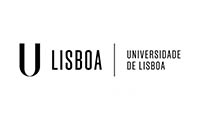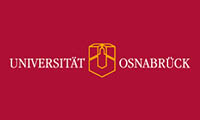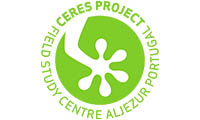Blog
IFiT Student Field Trip May/June 2019 (Blog 2 - Liane Costello)
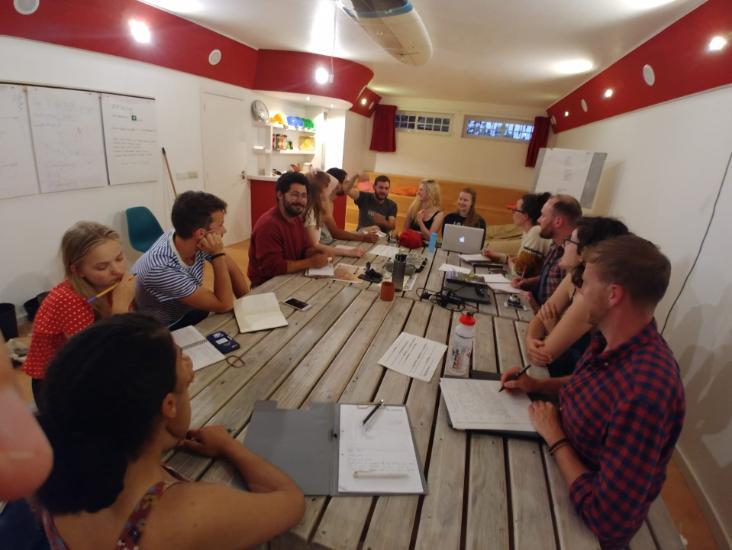
Hi everyone, Liane Costello here checking in from the Innovating Field Trips (IFiT) Erasmus+ programme in the stunning surroundings of Aljezur, Portugal. I am a student studying at University College Cork. I have just finished my post-graduate certificate in Marine Biology and am set to start the masters programme in September 2019.
The IFiT programme has given me an amazing opportunity to get field research experience through learning skills and sharing knowledge between this international and interdisciplinary group. My chosen project for the programme is geographical, biological and litter surveys of the Amoreira shore area to inform possible future coastal management strategies. The area is a popular beach destination for both tourists and locals alike. The primary uses of the beach is for leisure and activity (such as surfing). There are two restaurants and a surfing school located beside the beach. The successful management of this area is important to the local economy.
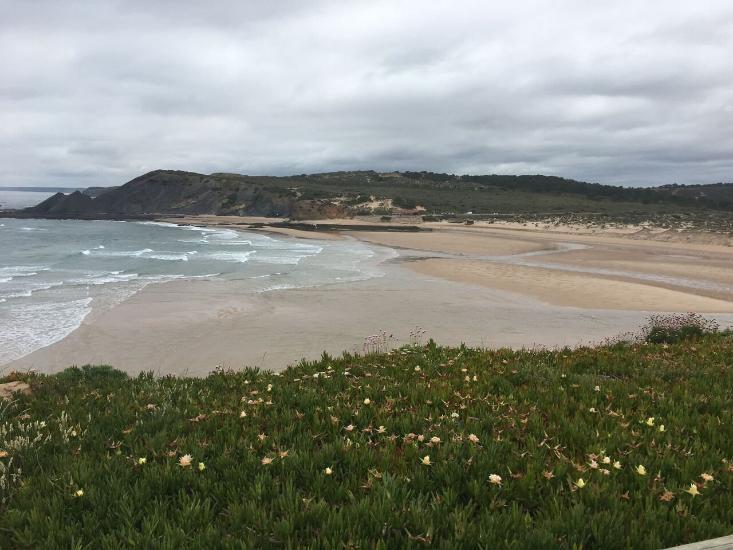
Amoreira Beach at low tide
Our group consists of a coastal management masters student (Claudia), two geologists, both undergraduate (Ricardo) and masters (Marta), and myself, the marine biologist. For most of our time here, we have been in the field surveying possible issues that could have environmental, social and economic effects within the shore area. These include rockfall susceptibility, dune profile and biodiversity, and litter collection.
To examine the rockfall susceptibility, Marta and Ricardo have mapped limb dips and curvatures of the folded, cliff-forming Sandstone on the Southern boundary of the shore area and estuary. On fold limbs, rockfall susceptibility increases as dip increases and so by measuring the cliffs, we hope to map the potential risk areas. For the dune profile, Marta has been mapping dune movement over the past 15 years through satellite imagery. In addition, we have both collected onsite coordinates and measurements of the dunes to examine their current condition. For dune biodiversity, I have been surveying the gradient of vegetation abundance and diversity from the embryo dune to the the fixed dune through random sampling. The profile of this beach has altered in the past 20 years, changing from gently sloping to a slightly steeper profile which has decreased the size of beach area forcing many people to utilise the dunes for their leisure activities. This has led to trampling of vegetation within the area which has, in turn, led to decreased plant growth in certain areas which may have possible repercussions on dune stability. Using both the beach profiling and biodiversity survey, we are mapping the current conditions of the dune system and this data can be used to measure potential risks, such as areas susceptible to erosion, to inform future management strategies. Finally, Claudia has been examining the abundance and type of litter in the shore, estuary and dune area. ter is collected each day and analysed for type and potential source (general public, fishermen, and miscellaneous) during the evening. She has found that, within the area, cigarette butts are the number one type followed by cotton buds.
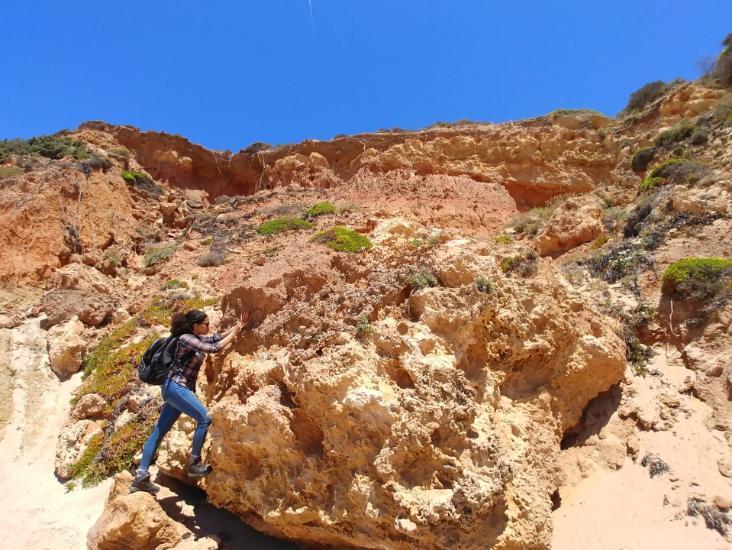
Measuring the folded, cliff-forming Sandstone on the Southern boundary of the shore area and estuary.
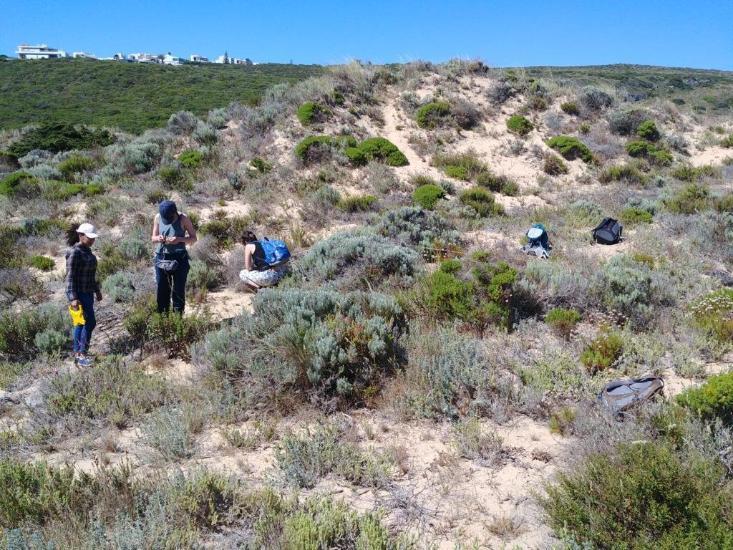
Vegetation abundance and diversity sampling in the dunes.
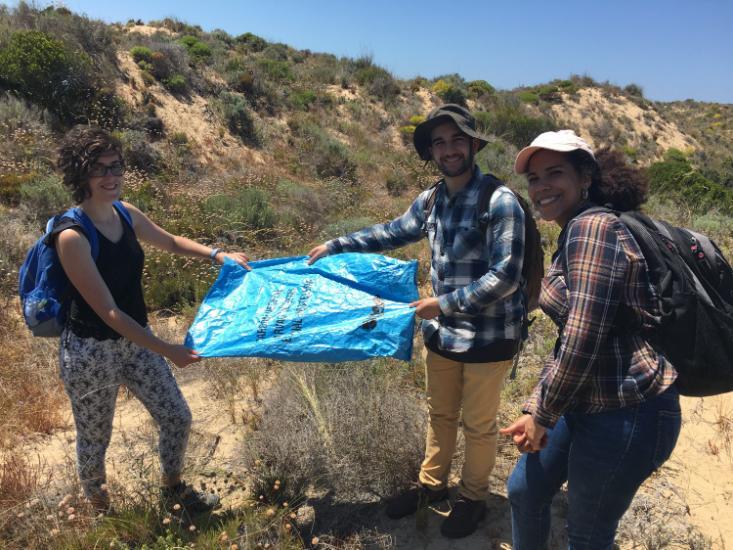
Litter collection in the dunes.
But it is not all about work! This social aspect of this experience has been one of the highlights. Two weeks living in such close quarters with 15 other people can be challenging at times but for the most part we have had a lot of fun. Meal preparation and clean up has been divided between the groups and the quality of cooking has been excellent. Each evening, everyone comes together after a long day in the field for dinner and it is a very social atmosphere. We go to the beach together, swim together, surf together. The group dynamics has surpassed my expectations and has added so much to this experience.
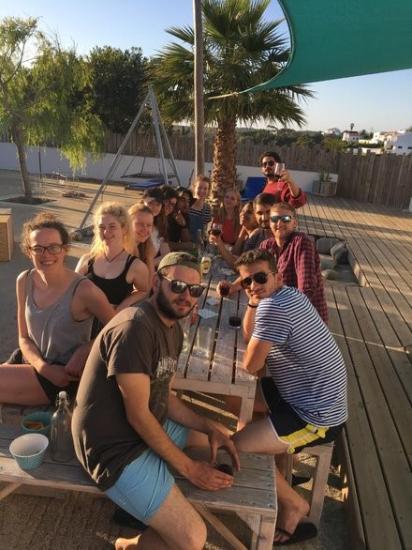
Dinner time at the house
As we draw towards the end of this programme, we are all hard at work creating presentations of the data we collected to present in a local market this Saturday to stakeholders and tourists. I am looking forward to showing our work to the public and promoting the IFiT programme as a beneficial addition to the area. The whole experience has given me so much and I am so delighted to have been chosen as a participant.

